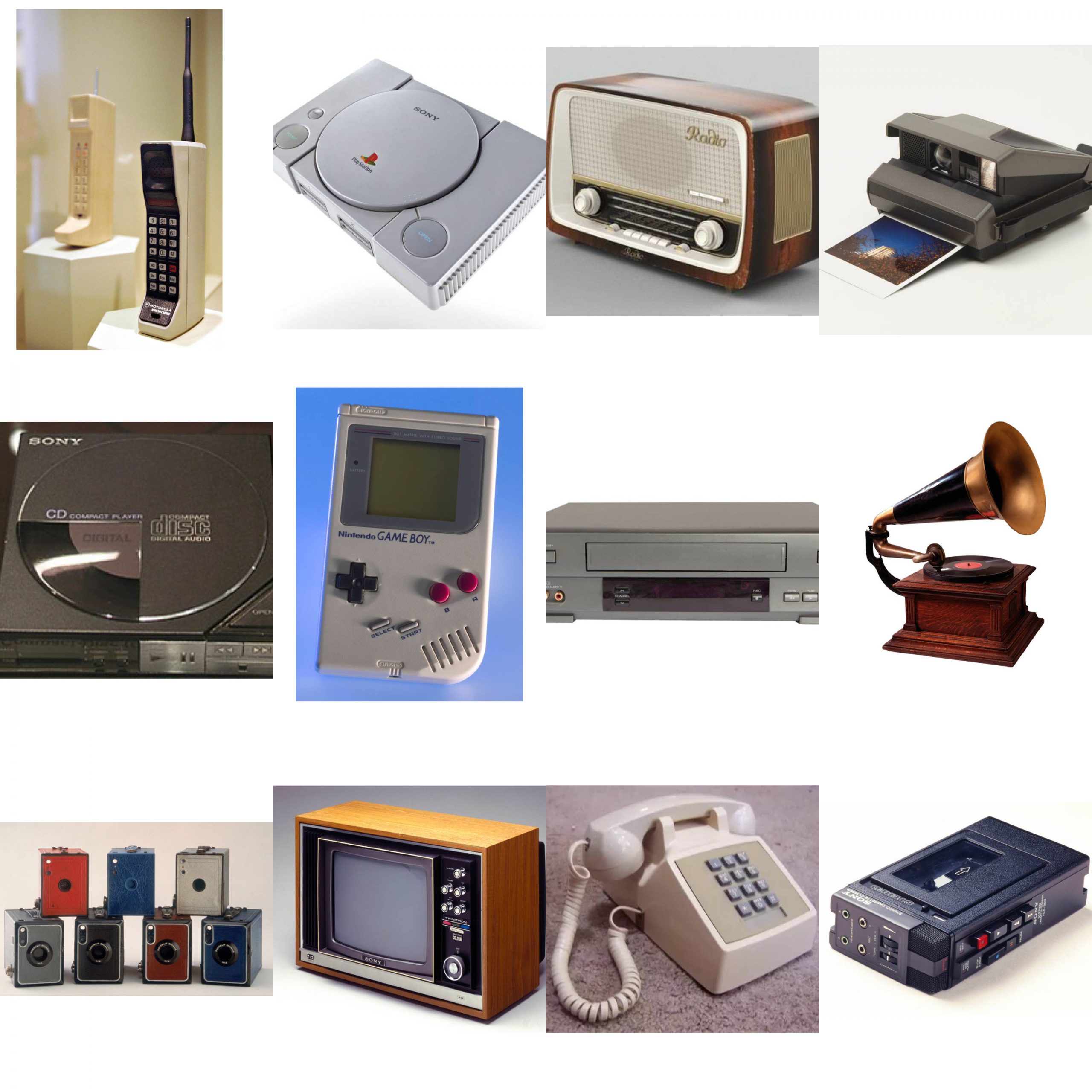By Abimbola Mohammed
Technology changes at an unbelievable pace with new inventions coming out almost daily. At the rate of technology turnover, most of the things we’re used to right now won’t be around for long. There will be new technologies and gadgets in their place, while they become outdated only a few years after they arrive on the scene. And it’s kind of funny that the most recent generation might not even know what some of these items are after just a few decades of use.
We all remember when we used to carry around cellphones the size of bricks, walkmans, television sets, radio, cassette players, Discman, Disney VHC, video cameras, care some of the gadgets that made our homes entertained in the 70s, 80, and 90s.
Sony Trinitron: Was launched in 1968 as color TV sales were finally taking off stands at the fore of memorable sets, in part for its novel way of merging what to that point had been three separate electron guns. The Trinitron was the first TV receiver to win a vaunted Emmy award, and over the next quarter-century, went on to sell over 100 million units worldwide.

Sony’s Walkman: Was the first music player to combine portability, simplicity, and affordability. While vinyl records were still the most popular music format, the Walkman was much smaller with mini cassettes and was small enough to fit in a purse or pocket. It ushered in the phenomena of private space in public created by the isolating effect of headphones. It ran on AA batteries, allowing it to travel far from power outlets. Sony eventually sold more than 200 million of the device. The walkman paved the way for the CD player and the iPod.

CD Player: Is an electronic device that plays audio compact discs, which are a digital optical disc data storage format. CD players were first sold to consumers in 1982. CDs typically contain recordings of audio material such as music or audiobooks. CD players may be part of home stereo systems, car audio systems, personal computers, or portable CD players such as CD boomboxes.
Victorola Record Player: Though the phonograph also known as gramophone was invented in 1877, it was the Victor Talking Machine Company’s Victrola that first made audio players a staple in most people’s homes up till the 70s. The device’s amplifying horn was hidden inside a wooden cabinet, giving it the sleek look of a sophisticated piece of furniture. Records by classical musicians and opera singers were popular purchases for the device.

Kodak Brownie Camera: Marketed to children, carried by soldiers, and affordable for everyone, this small, brown leatherette and cardboard camera introduced the term “snapshot” through its ease of use and low cost. Priced at just $1 (with film that was similarly inexpensive) when it was introduced in February 1900, the Brownie took cameras off tripods and put them into everyday use. And for the rest of the world, it helped capture countless moments and shape civilization’s relationship to images.

VCR: Though it took a long, winding road to mass market success, the videocassette recorder, or VCR, got its start in 1972 with Philips’ release of the N1500. Predating the BetaMax versus VHS format war, the N1500 recorded television onto square cassettes, unlike the VCRs that would achieve mass market success in the 1980s. But featuring a tuner and timer, Philips device was the first to let television junkies record and save their favorite programs for later. But that kind of convenience didn’t come cheap back then.

Game Boy: In 1989 Nintendo Game Boy, handheld invented the modern mobile game. Its modest power and anemic screen forced developers to distill the essence of genres carried over from consoles. The result: A paradigm shift in mobile game design that’s influenced everything from competing devoted handhelds to Apple’s iPhone. It’s a wonder we didn’t destroy our eyes gaming on the Game Boy’s tiny 2.6-inch olive green screen, considering how many Nintendo sold (over 200 million when you include the souped-up subsequent Game Boy Advance.)

Polaroid Camera: When the first affordable, easy-to-use instant shooter, the Polaroid OneStep Land camera, hit the market in 1977, it quickly became the country’s best-selling camera, 40 years before “Millennials” were a thing. That Polaroid photographs so dominated 80s-era family albums and pop culture gives the square-framed, often off-color snaps a retro appeal that today is celebrated by enthusiasts and aped by billion-dollar apps like Instagram.

DVD Player: Electronics manufacturers were already fiddling with standalone optical storage in the early 1990s, but the first to market was Toshiba’s SD-3000 DVD player in November 1996. Obsoleting noisy, tangle-prone magnetic tape (as well as the binary of “original” versus “copy”) the DVD player made it possible to watch crisp digital movies off a tiny platter just 12 centimeters in diameter still the de facto size for mainstream optical media (like Blu-ray) today.

Play Station: You’d be hard pressed to name a single PlayStation feature that by itself transformed the games industry. It’s been Sony’s obsession with compacting high-end tech into sleek, affordable boxes, then making all that power readily accessible to developers, that’s made the PlayStation family an enduring icon of the living room. Part of Sony’s triumph was simply reading the demographic tea leaves: The company marketed the PlayStation as a game system for grownups to the kids who’d literally grown up playing Atari and Nintendo games. And that helped drive the original system, released in 1994, to meteoric sales, including the PlayStation 2’s Guinness record for bestselling console of all time—a record even Nintendo’s Wii hasn’t come close to breaking.

Cellphone: Motorola’s Dynatac 8000x was the first truly portable Cellphone when it launched in 1984. Marty Cooper, an engineer with Motorola at the time, first demonstrated the technology by making what’s regarded as the first public cellular phone call from a New York City sidewalk in 1973. (It was both a PR stunt and an epic humblebrag: Cooper called his biggest rival at AT&T.) The Dynatac 8000x weighed nearly two pounds and cost almost $4,000.

Radio Player: The idea of radio as entertainment took off in 1920, with the opening of the first stations established specifically for broadcast to the public such as KDKA in Pittsburgh and WWJ in Detroit. More stations opened in cities across North America in the following years and radio ownership steadily gained in popularity. Radio sets from before 1920 are rarities, and are probably military artifacts. Sets made prior to approximately 1924 were usually made on wooden breadboards, in small cupboard style cabinets, or sometimes on an open sheet metal chassis. Homemade sets remained a strong sector of radio production until the early 1930s. Until then there were more homemade sets in use than commercial sets.








Comment
No comments found.